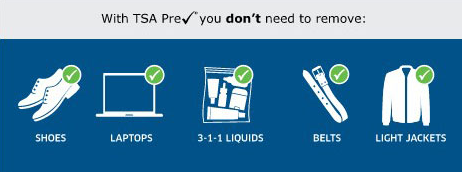I’ve lost track of how many times Joe and I have recommended getting TSA PreCheck to help you save time at the TSA checkpoint. At Orlando International Airport, which is our “home” airport, seeing waits of 30-45 minutes is usually the norm for the regular lines, while waits at PreCheck are usually 5 or 10 minutes.
In the past few years, the waits have actually been closer to 10 minutes moreso than 5. Not that an extra 5 minutes is a huge deal, and with more people enrolled in Pre-Check, that would make perfect sense if they don’t increase the number of dedicated TSA PreCheck queues. It turns out there’s another reason that line has been slower recently, but it sounds like the TSA may eliminate that problem soon.
Since the mid-2010s, the Transportation Security Agency (TSA) has utilized a program called Managed Inclusion that has allowed passengers who they (the TSA) feel are low risk to get PreCheck status. Joe’s dad is one of them – he never went through the process to get TSA Pre-Check, but more often than not, his airline ticket gives him PreCheck status. Spouses of Pre-Check passengers who don’t themselves have PreCheck are another group who have often been given PreCheck status.
 Now, that’s all well and good for these people who get the pleasant surprise of being able to use the Pre-Check lane. Unfortunately, a lot of them are not familiar with the procedures for Pre Check, so when they get to X-ray, they’re still removing their computers and bag o’liquids from their bags, which slows down the overall flow of the checkpoint.
Now, that’s all well and good for these people who get the pleasant surprise of being able to use the Pre-Check lane. Unfortunately, a lot of them are not familiar with the procedures for Pre Check, so when they get to X-ray, they’re still removing their computers and bag o’liquids from their bags, which slows down the overall flow of the checkpoint.

In September 2015, the TSA was supposed to have phased out the Managed Inclusion program, which was celebrated by many frustrated PreCheck members who’ve had to stand in line behind people who were still taking the time to remove their shoes, belts and jackets at PreCheck X-ray queues. However it turned out the Managed Inclusion program actually had TWO PARTS to it. Managed Inclusion II, which included swabbing passengers’ hands to detect traces of explosives and using behavior detection tactics before sending them into the fast lane, was the part that was phased out. Managed Inclusion I, which included select travelers who are not enrolled in the program still getting a TSA PreCheck designation on their boarding pass, continued.
That might change in the not-too-distant future.
H.R. 6265 (a.k.a. the PreCheck is PreCheck Act of 2018) is a bill that states:
This bill directs the Transportation Security Administration (TSA) to ensure that only travelers who are members of a trusted traveler program are permitted to use TSA PreCheck security screening lanes at TSA checkpoints.
Any traveler under the age of 12 or over the age of 75 who is not a member of a trusted traveler program shall be permitted to utilize PreCheck security screening lanes at TSA checkpoints when traveling on the same reservation as a member of a trusted traveler program.
The TSA shall implement a risk modified screening protocol for lanes other than designated TSA PreCheck security screening lanes at TSA checkpoints to further segment passengers based on risk. Only low-risk passengers shall be eligible to undergo risk modified screening at TSA checkpoints.
The Inspector General of the Department of Homeland Security must assess whether there has been a systematic pattern of violations of the use of TSA PreCheck security screening lanes at TSA checkpoints during the previous calendar year.
The TSA shall complete the implementation of a long-term strategy to increase enrollment in the TSA PreCheck Program and expand the total population of members of trusted traveler programs.
According to Forbes, the law has passed the house and is on its way to the senate. Time will tell what will happen next.
Like this post? Please share it! We have plenty more just like it and would love if you decided to hang around and clicked the button on the top (if you’re on your computer) or the bottom (if you’re on your phone/tablet) of this page to follow our blog and get emailed notifications of when we post (it’s usually just two or three times a day). Or maybe you’d like to join our Facebook group, where we talk and ask questions about travel (including Disney parks), creative ways to earn frequent flyer miles and hotel points, how to save money on or for your trips, get access to travel articles you may not see otherwise, etc. Whether you’ve read our posts before or this is the first time you’re stopping by, we’re really glad you’re here and hope you come back to visit again!
This post first appeared on Your Mileage May Vary
